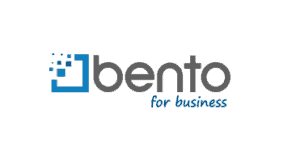Being a member of Generation X means telling you mother to stop writing checks to your kid because he doesn’t know how to cash them and explaining to your kid how to endorse a check so that his grandmother can finally balance her checkbook. Email payments haven’t replaced Grandma’s birthday checks, but they will very soon.
Venmo and Zelle are fantastic products, but they are not designed for business use. Bento Pay is.
Checks and Banks
Checks are, well, old fashioned. Bank marketers talk about spending accounts instead of checking accounts. Thanks to widespread use of email payments, people are entering the workforce with no idea how to write or deposit a check. However, my mother is not the only person still writing them: most American businesses still send checks. Payroll may be handled by ACH, but almost everything else involves a paper check at so many companies. The Federal Reserve reports a steady decline in the number of checks processed, but also an increase in the average value of each check written. This indicates that most of the decline is on the consumer side.
Businesses are slowly coming around because processing checks is expensive and time consuming. There is a huge range of numbers floating around the internet about the cost of cutting checks, anywhere from $2 to $20 per check. Whatever the actual number is, it is not zero. Furthermore, mail gets lost.
What About That Email Payments App on My Phone?
Zelle and Venmo are the two big consumer email payments apps. Zelle is owned by a group of banks, and Venmo is part of PayPal. These are designed for consumer use, and they are great! You can pay for your babysitter, your hairdresser, and your cousin’s Girl Scout cookies in practically no time.
These systems don’t work so well for business-to-business or business-to-consumer payments. Some of that is because the market opportunity for consumer payments is so huge that the companies haven’t had time to address the business market. It takes time to set up the connections, too. Zelle reports that only about 200 of the 11,000 banks in the US are on its platform. Some day, America’s grandmothers will stop sending birthday checks and start sending birthday payments, and that is the market Venmo and Zelle are addressing.
The other reason is that business to business payments are governed by the Financial Crimes Enforcement Network (FinCen). This requires banks to have extensive documentation on who their business customers are as well as the ability to monitor their transactions. Venmo will do this to allow some merchants to accept Venmo for payments, and some banks that use Zelle will make it available to business customers. For the time being, though, these are primarily consumer products.
Many small businesses are using the email payments apps anyway. And as we approach the April 15 tax deadline, they are finding one really big problem: these products do not integrate with their accounting systems.
Bento Pay is the Solution
Bento Pay works like the consumer email payments systems, but it is designed for business use. It has enterprise-grade security, works with your other payments like debit cards and ACH, and connects to your accounting app.
Business owners, especially younger ones, don’t want to deal with checks. Venmo is not set up for business payments. Zelle is, for some users, but not for others. This is the time to talk about Bento Pay with customers. For businesses, Bento Pay is as easy to use as Venmo and Zelle, but it is designed for businesses. Businesses can see all spending in one place, and it all integrates with their accounting systems. Recipients can have the money deposited in their bank accounts or put on a virtual Visa debit card, whichever is easier for them.
If you pay people by check and wish there was a Venmo for business, sign up for a free trial of Bento Pay.
Find Out More
- Learn more about how Bento Pay works.
- Read how wedding planners can use Bento Pay.
- Get a customized demo to see how Bento for Business can work for you.






